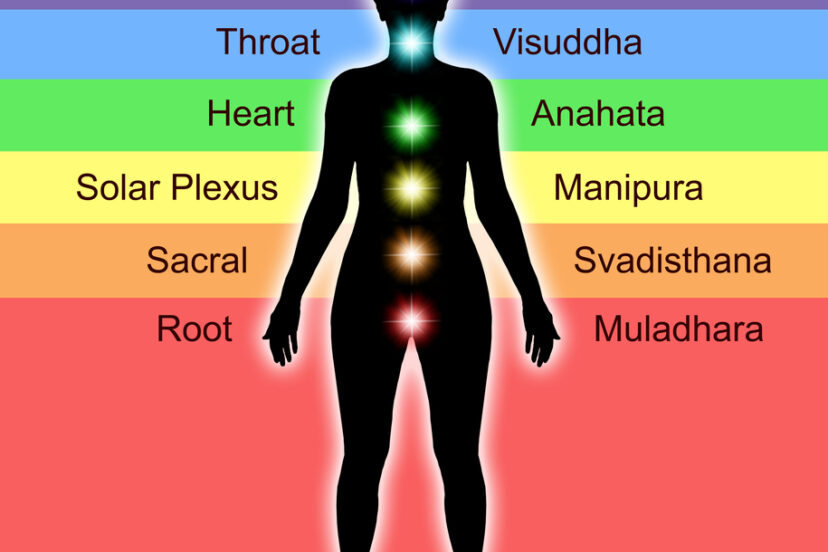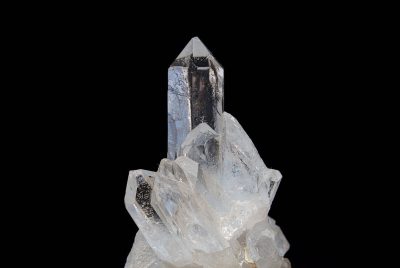Introduction Electromagnetic fields (EMF) are invisible areas of energy, often referred to as EMF radiation, that…
The Power of Chakras: A Guide to Understanding Your Inner Energy

What Are Chakras?
The term “chakra” often conjures mystical or esoteric images, but the concept is grounded in a profound understanding of human physiology and psychology. Derived from ancient Indian traditions dating back over 4,000 years, chakras are spinning wheels or vortexes of energy that align along the spinal column, starting from the base of the spine to the crown of the head. Each of the seven primary chakras is associated with specific colors, sounds, and aspects of our being, serving as a bridge between the physical and the metaphysical.
A Glimpse Into the History
The chakra system has its roots in early Hindu and Buddhist traditions, where it was conceptualized as a metaphysical anatomy. These ideas eventually influenced Western New Age thought, where they were integrated into a variety of spiritual and therapeutic practices. However, it is essential to acknowledge the rich and complex origins of chakras as being deeply embedded in the spiritual philosophies of the East.
The Seven Primary Chakras
- Root Chakra (Muladhara)
Located at the base of the spine, the root chakra is associated with survival, stability, and basic human needs. Its color is red. - Sacral Chakra (Svadhisthana)
Positioned between the base of the spine and the navel, it represents creativity, emotion, and sexual energy. Its color is orange. - Solar Plexus Chakra (Manipura)
Located in the upper abdomen, this chakra governs personal power, self-esteem, and individual will. Its color is yellow. - Heart Chakra (Anahata)
Situated over the heart, it is the center of love, compassion, and kindness. Its color is green. - Throat Chakra (Vishuddha)
Located at the throat, it is linked to communication and expression. Its color is blue. - Third Eye Chakra (Ajna)
Positioned between the eyebrows, it is related to intuition and insight. Its color is indigo. - Crown Chakra (Sahasrara)
Located at the top of the head, this chakra is associated with spiritual enlightenment and universal understanding. Its color is violet or white.
Beliefs About Their Role in Your Life
In traditional teachings, the chakras are viewed as channels that facilitate the flow of life force energy, known as “Prana” in Hinduism or “Qi” in Chinese traditions. An imbalance or blockage in any chakra can manifest as physical, emotional, or psychological issues. For example, a blocked root chakra could lead to anxiety and insecurity, while an imbalanced heart chakra might result in a lack of empathy or connection with others.
Western interpretations often focus on the psychological aspects, suggesting that understanding and balancing your chakras can lead to emotional and mental well-being. Practices like Reiki, yoga, and meditation frequently incorporate chakra balancing techniques aimed at harmonizing the energy flow within the body.
Supporting Your Well-being in Life
While the chakra system may not be scientifically verified, countless individuals attest to the benefits of aligning and balancing these energy centers. Here’s how chakras can support your well-being:
Emotional Balance
Tuning into your chakras can help identify emotional imbalances. Techniques like chakra meditation can help you confront and heal emotional wounds.
Physical Health
Many believe that a balanced chakra system contributes to physical health. For instance, the solar plexus chakra is often linked to digestive issues. Practices like yoga aim to balance chakras, promoting better physical health.
Enhanced Creativity
Balancing the sacral chakra may unlock creative blocks and enhance your ability to express yourself artistically.
Improved Communication
A balanced throat chakra could improve your communication skills, helping you express yourself clearly and authentically.
Spiritual Growth
Last but not least, the crown chakra is said to connect you to the divine, fostering a sense of spiritual growth and enlightenment.
Summary
While the concept of chakras may seem esoteric to some, their potential impact on physical, emotional, and spiritual well-being is significant enough to warrant exploration. By integrating chakra-balancing practices into your life, you could unlock a new dimension of holistic well-being. So why not take some time to explore this ancient system and see what it can offer you? You might just find a more balanced, healthier, and spiritually enriched version of yourself.
Scientific Research
Western science focuses on empirical evidence that can be quantified, measured, and tested under controlled conditions. Chakras, being abstract concepts rooted in ancient spiritual traditions, don’t easily lend themselves to such scientific scrutiny. Consequently, mainstream medical and scientific communities generally don’t recognize chakras as an established framework for understanding human health and psychology. However, in recent years, some related research has been done.
Attempted Scientific Exploration
That said, there have been some attempts to bridge the gap between traditional chakra beliefs and scientific inquiry. Some researchers have investigated the psychological and physiological effects of practices that focus on chakra balancing, such as Reiki, Kundalini Yoga, and meditation. These practices have been studied for their potential benefits in stress reduction, mental clarity, and emotional well-being.
For example, some studies have shown that meditation and mindfulness techniques, which are sometimes integrated into chakra practices, can have a measurable impact on stress hormone levels, heart rate, and blood pressure. However, these studies usually focus on the benefits of the practices themselves, rather than validating the existence or function of chakras.
Bioenergetic Fields
Some proponents of the chakra system point to research on bioenergetic or bioelectromagnetic fields as a possible scientific basis for understanding chakras. The argument is that these fields could represent or correlate with the energy flow described in chakra and prana theories. However, this line of thought remains speculative and has not been substantively verified by scientific research.
Criticisms and Controversies
Critics argue that without empirical evidence, the concept of chakras should be considered a belief system rather than a factual representation of human physiology or psychology. Even within the realm of complementary and alternative medicine, there are debates over how best to integrate traditional beliefs like chakras with modern healthcare practices.
Psychological Aspects
In a more supportive light, some psychologists have suggested that the chakra system can serve as a valuable framework for conceptualizing aspects of human psychology, emotional well-being, and self-awareness. Although not ‘scientific’ in the conventional sense, this perspective values the system as a tool for personal development and introspection.
In Summary
While there is limited scientific research on the concept of chakras, the practices associated with chakra balancing—like meditation and yoga—have been studied for their psychological and physiological benefits. For many people, the chakra system serves as a useful guide for understanding their own bodies and minds, even if the system doesn’t yet have a basis in mainstream science. As interdisciplinary research continues to grow, there may be future studies that offer new insights into this ancient belief system.




